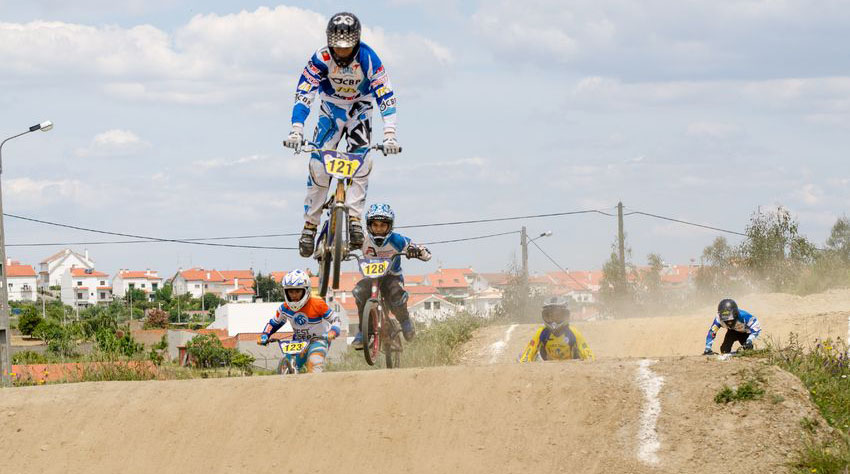Securing BMX Freedom by Building Your Own Dirt Jumps
Posted by Kitty on Apr 18th 2014
While skateboarders and BMX riders coexist in some cities -- even if uneasily -- in others the situation is not so friendly. Tensions between the two groups have often led the bike enthusiasts to put up and protect recreational spots of their own, especially when they have been made to feel unwelcome at local skate parks. Fortunately, many have enjoyed great success building dirt jumps that are both: perfect for enjoying with dirt jump bikes and not likely to attract unwelcome attention. For those with access to the necessary land, making your own track can often be a great option so you can start securing BMX freedom by building your own dirt jumps.

Start Simple and Work Your Way Up Learning how to build a dirt jump is actually easier than many think. Once a space of sufficient size has been acquired, little more is needed other than the willingness to do some hard work. Shovels and a wheelbarrow are pretty much mandatory, and other tools such as picks may make things easier, but a few dedicated riders can easily put up a great jump or two within the space of a day if the local soil permits.
Normally, it's best for inexperienced builders to start with a single jump. Begin by mapping out a run-up space, as a jump that riders can't hit with enough speed to launch from will be nothing more than an eyesore. For this reason, it's often a good idea to put single jumps at the bottoms of hills if they are available, as this can make it much easier to build up the necessary velocity. It's even better if the space chosen will allow for more than one jump in a line, even if riders don't plan to put up a second right away.
Once a good run-up has been identified, it's time to build the jump itself. The launch side of the jump should ideally be around three feet wide or more, but it's normally acceptable to skimp a bit on width if that helps. With the outlines of this launcher planned out, simply start digging down into the dirt to one side and piling it into place. Don't worry too much about the shape of the developing ramp, although shoveling effort should focus on creating a generally wedge-shaped structure.
When enough soil has been heaped into place, packing, shaping and fine-tuning can begin. This is where experience really comes into play, as figuring out what kind of shape will result in the most air time is a skill that must be acquired. Working from photographs of existing jumps in other locations can often be helpful here, too.
Coming Back Down to Earth Once the launch side of the jump has been built and carefully packed down, it's time to build the landing. This should be quite a bit wider than the launcher, as riders will not always be landing directly in line with where they took off. Despite this, the landing side is actually simpler to build, as it doesn't need as much tuning with regard to shape. It should be a bit lower in height than the take-off side of the jump, but not so much that riders endure unnecessary jolts upon landing.
Taking the Next Steps This first jump is likely to have been a learning process for all involved. Most groups of riders find that they'll come up with ideas for improvements quite quickly, and it's often best to try and mold the original jump into something better rather than starting a whole new project. Once that first jump has been worked into something satisfying, though, many riders find that the best thing to do is to add another following it in a line. Plotted properly, this can really enhance the fun riders have, as every run will involve getting air more than once.
Going Official and Taking Advantage of Other Resources For those riders who have private land to build on, or those who find a way to hide their creations from prying eyes, building your own dirt jumps might be the perfect answer. Many other riders around the world, though, have had great success going through official channels when it comes to creating places for their dirt jump bikes to be ridden.
Parks departments and other authorities often have experience designing and building permanent skate parks, and it's often fairly easy for BMX riders to convince them that dirt jump tracks would be similarly valuable. Often the best way to get such projects rolling is to approach these authorities under the auspices of existing bicycling or BMX clubs, as these tend to lend an air of authority to what might otherwise seem a rag-tag group of local riders.
These overtures are most likely to succeed when riders do their absolute best to convince others that they're going to be responsible and accountable. Having fun on the track is one thing, but dressing up nicely and making an effort to seem professional when speaking to those with the power to approve or deny a project can make a real difference. Efforts of this sort also typically involve a fair amount of fund-raising, grant writing, and community outreach before they come to completion, but a great number of riders have succeeded in having some impressive dirt jump tracks built in this way in recent years.
